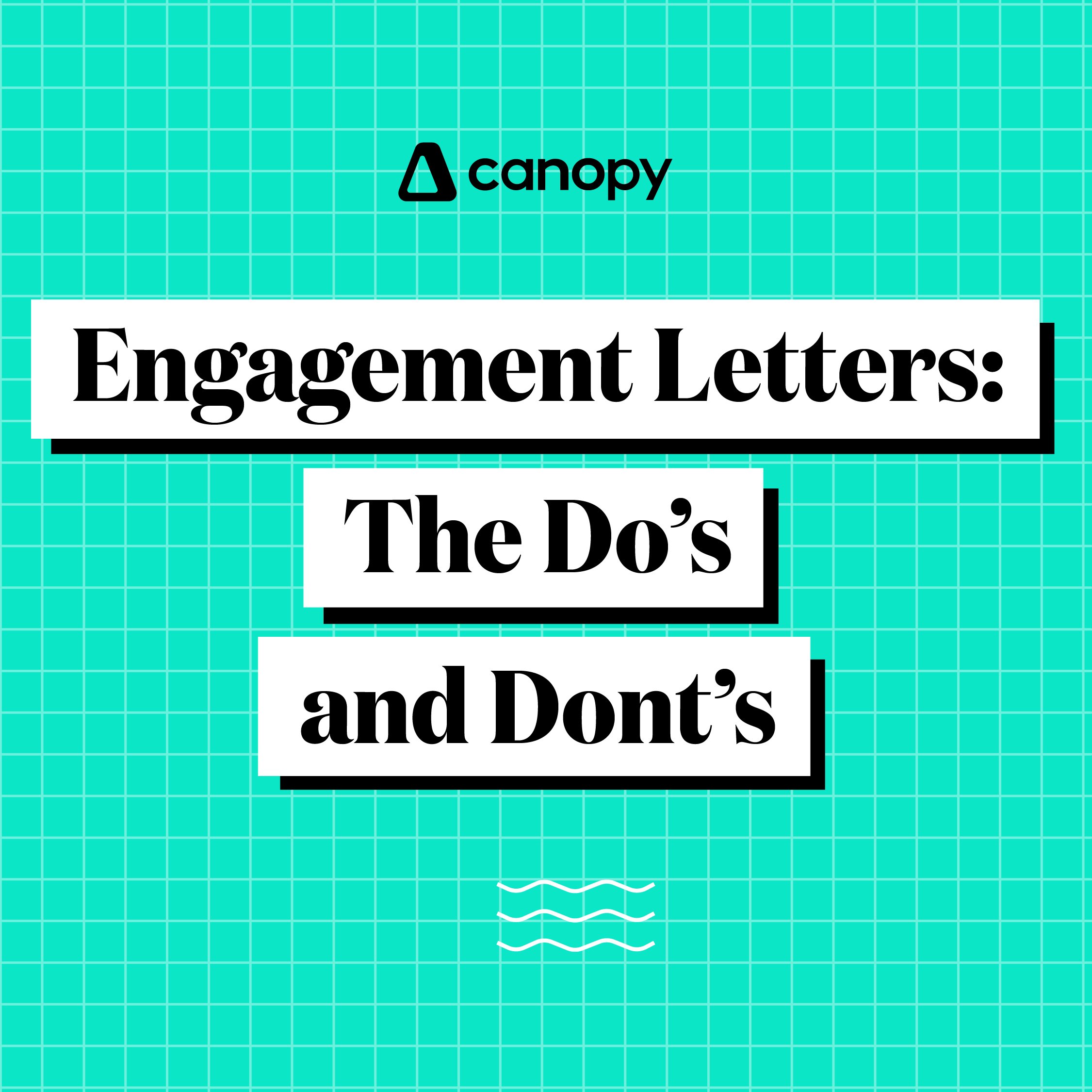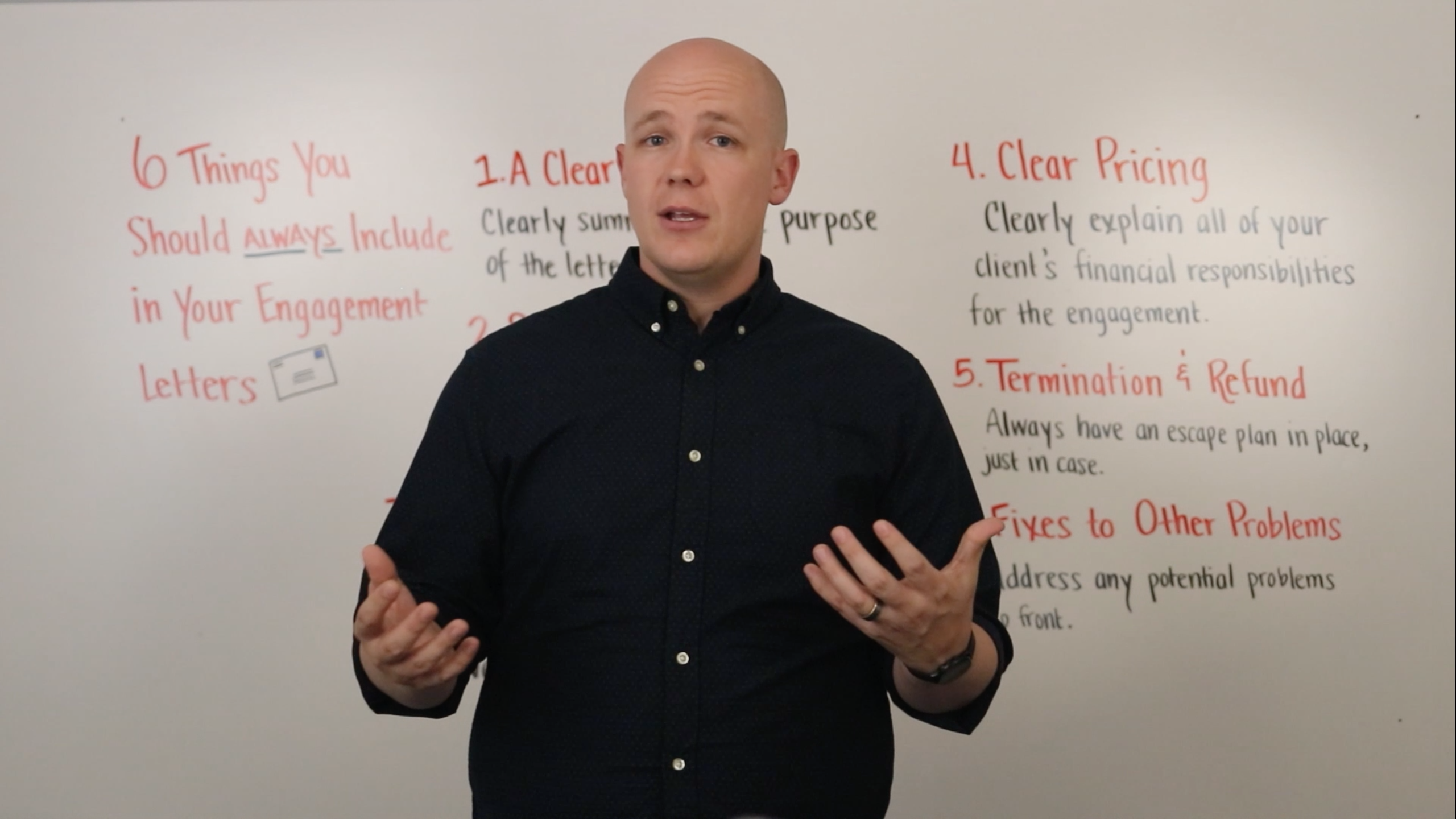You know you should use engagement letters in your tax resolution cases, but you need to figure out what your engagement letter should look like. Or you've finally decided to update the same old letter you've used for years. You may be fine-tuning your current letter, intent on taking it from great to flawless. Regardless, in seven simple steps, you're in the right place to learn how to construct an engagement letter properly.
1. Introduction
The introduction of your engagement letter has two purposes — to lay out the letter's purpose to the client and to set the letter's tone. The introduction doesn't need to be complicated. State that the letter's purpose is to document key components of the engagement, such as scope and pricing. It's better to keep the entire letter's tone simple and to the point. Just because this is a legally binding document doesn't mean it needs to read like fine print.
2. Scope of the engagement
One of the most important functions of an engagement letter is to define the scope of the engagement.
It would be best if you were as specific as you need to be for each engagement, but at a minimum, your engagement letter should detail:
-
- The services offered. The more specific you can be, the better. For instance, stating that you will prepare and submit a doubt about liability offer in compromise is far more useful than offering generic “tax resolution.”
- The term of the engagement. Generally, this is a specific time (e.g., one year) or until services are completed, whichever is first.
- A disclaimer/limitation of liability statement. This is your chance to clarify what you don’t guarantee or what related services are not a part of the engagement (e.g., appeals representation).
3. Pricing
No matter how you structure your fees, your pricing for each engagement should be clearly stated in the engagement letter. Your clients desperately want to trust you but will likely hesitate to extend that trust. By detailing the fees and expenses the client can expect throughout the engagement, you can ensure that you never — even unintentionally — break the client's trust by springing an unexpected expense on them.
Your engagement letter should include information such as:
-
- The total they can expect to pay to your practice
- Fees due upfront
- Available discounts (e.g., for full payment upfront)
- Potential penalties (e.g., for late payments)
- Expenses paid to the IRS (e.g., application fees)
It’s also a good idea to include language explaining that in rare, extraordinary cases, the engagement will prove to be significantly more complicated than expected. In such cases, you can reserve the right to adjust your fees to reflect the additional time or expertise required, promising to notify the client promptly if their case will require such an adjustment.
4. Termination and refund
If, for whatever reason, you and your client need to terminate your arrangement early, it's nice to have a built-in eject button. If your firm offers a refund for any unperformed services, be sure to clarify the terms.
5. Client expectations
We can't cover every potential clause your practice might need to include in your engagement letters. Consider your policies and the needs of your practice, and include language that addresses them as necessary.
If certain things tend to break down in your client relationship, consider building provisions in your engagement letter that mitigate those risks. For example, if you constantly wait weeks for a client to respond with needed information, create a communications clause in your engagement letter. If you insist that the client defer all contact with the IRS to you and others within your practice, make that clear in the engagement letter. The engagement letter is the place to put all your expectations in writing.
6. Signature block and date
Nothing is complicated here; don't forget to leave a space for signatures and dates at the end of the document.
7. Save yourself some time
Once you've put together an excellent engagement letter, save it. Use it as a template for all of your future engagement letters. Adjusting each letter's specifics should take less than 10 minutes for each new engagement if you have a good template in place.
Engagement letters are essential for any firm; take the guesswork out of your relationship with your clients and create a good roadmap for communication. By following these seven steps, you will quickly become an expert in writing your letters.
Canopy is a one-stop shop for all of your accounting firm's needs. Sign up free to see how our full suite of services can help you today.

Chris is a content manager for Canopy, joining the team with a combined eight years of experience as a copywriter, editor-in-chief, and content marketer. He's a skilled wordsmith and strategic thinker who shapes brand identity through compelling content and fosters a collaborative and innovative environment. With a passion for storytelling and a dedication to excellence, he is a driving force behind any company's success in content marketing. Champion of the Oxford comma.
READ MORE BY Chris







Get Our Latest Updates and News by Subscribing.
Join our email list for offers, and industry leading articles and content.